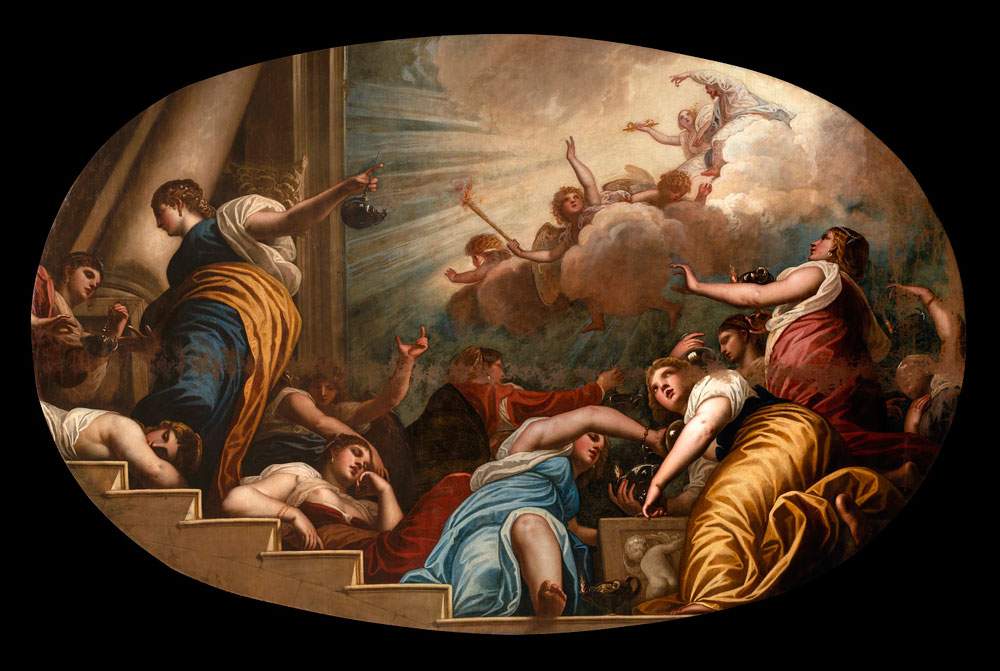In early September 2021, the Gallerie dell’Accademia in Venice will inaugurate an unprecedented exhibition dedicated to painting in Venice and the Veneto region in the seventeenth and eighteenth centuries, which will take place in the Saloni Selva-Lazzari on the ground floor.
On display will be a selection of 63 works, some of which have never been exhibited before or never admired in their current appearance, as they have been restored for the occasion. Among the restored masterpieces are Tiepolo’s Chastisement of the Serpents, a canvas more than 13 meters long from the Venetian Church of Saints Cosmas and Damian; and Luca Giordano’s Deposition of Christ from the Cross, exhibited for the first time within the permanent collection; Erminia and Vafrino discover Gianantonio Guardi’s Wounded Tancredi, the only canvas in a cycle of thirteen works inspired by Jerusalem Delivered, returned to Italy after a complex collecting process; Padovanino’s Parable of the Wise Virgins and the Foolish Virgins, presented to the public for the first time ever and remounted on the ceiling as it was originally; and Venetian painter Giulia Lama’s Judith and Holofernes.
The new exhibition will present significant themes and protagonists of seventeenth- and eighteenth-century painting production. “With this initiative,” said director Giulio Manieri Elia, who curated the project together with deputy director Roberta Battaglia and Michele Nicolaci, “the Galleries become the privileged place, in the world panorama, to learn about an important and still little-known piece of art history, in particular painting in Venice and the Veneto region in the seventeenth century, which for the first time is represented in the museum with a space entirely dedicated to it. Also an absolute novelty is the layout of the 18th-century hall, which, next to previously unseen masterpieces, will present a sort of ’museum within a museum,’ reserved for one of the art geniuses of all time, Giambattista Tiepolo.”
In detail, Room 5 will feature large-scale works from 17th-century Venice mainly from churches and religious buildings in the city, including monumental altarpieces by Luca Giordano, such as the Deposition of Christ from the Cross, and Pietro da Cortona’s restored Daniel in the Lion’s Den. Also on display will be important masterpieces by Bernardo Strozzi, Nicolas Régnier, and Sebastiano Mazzoni, whose unpublished Strage degli Innocenti, just purchased by the state in 2021, is on display. There will also be an opportunity to understand the decoration of the Venetian church of theHospital of the Incurables, which was destroyed in 1831, whose Parable of the Wise Virgins and the Foolish Virgins by Padovanino, alsoalso restored and remounted on the ceiling to restore the correct view from below-in-su, and to see the large fragment of Bernardo Strozzi’s Parable of the Wedding Banquet, part of the decoration of the Incurabili, acquired by the state in 2016.
Room 6, on the other hand, will focus on the vast Venetian pictorial production of the 18th century, with some thematic subsections. Starting with the scene of Erminia and Vafrino by Gianantonio Guardi, now presented to the public after careful restoration that has recovered the quality and freshness of the pictorial draftsmanship, it will lead to a selection of works by Tiepolo, including the Chastisement of the Serpents, and to two other sections devoted to landscape and interior painting with Pietro Longhi’s famous scenes. Also featured in this hall is the Venetian painter Giulia Lama with Judith and Holofernes. In both halls great attention has been paid to the recovery of the seventeenth- and eighteenth-century decoration of the School of Charity, now incorporated into the museum itinerary on the second floor. In particular, from the Chapter Room come Gregorio Lazzarini’s Circumcision and Gianantonio Fumiani’s Dispute of Christ with Doctors, while from the New Chancery Room comes the cycle of canvases inspired by stories from the Old Testament, in which several personalities from the Venetian Academy of Fine Arts, such as Giandomenico Tiepolo, took part.
The new spaces thus articulated restore circularity to the exhibition itinerary on the ground floor, forming a link between the first section, opened in May 2015 (rooms 1-4) and the last, opened in January 2016 (rooms 7-13). From an art-historical point of view, the hall of seventeenth-century paintings (room 5) dialogues with the previous rooms dedicated to seventeenth-century private collecting (room 3), while the hall dedicated to the eighteenth century (room 6) anticipates the narrative of the last wing (particularly rooms 8 and 9), which tells the story of the international success of eighteenth-century painting.
The new exhibition itinerary was made possible thanks to the support of Venetian Heritage, a nonprofit organization committed to the preservation and promotion of Venice’s cultural heritage, which financed the entire layout as well as important restorations: from Tiepolo’s Chastisement of the Serpents to Luca Giordano’s Deposition of Christ from the Cross, from Giambattista Piazzetta’sGuessing to Gianantonio Guardi’sErminia and Vafrino. Other restorations were financed by the Ministry of Culture (Padovanino, Parable of the Wise and Foolish Virgins), Intesa Sanpaolo as part of the Restituzioni project (Pietro da Cortona, Daniel in the Lion’s Den, Nicolas Régnier, Annunciation) and private companies as part of the Rivelazioni project of Borsa Italiana (Giulia Lama, Judith and Holofernes and Francesco Ruschi, Saint Ursula).
The rooms also feature a completely renovated LED technology lighting system, thanks to the technical sponsorship of iGuzzini illuminazione.
Image: Padovanino, Parable of the Wise Virgins and the Foolish Virgins (1636-1637) © G.A.VE Photographic Archive. Photo by Matteo De Fina, courtesy of the Ministry of Culture - Gallerie dell’Accademia di Venezia.
 |
| Gallerie dell'Accademia, inaugurates unprecedented exhibition dedicated to Venetian painting of the 17th and 18th centuries |
Warning: the translation into English of the original Italian article was created using automatic tools. We undertake to review all articles, but we do not guarantee the total absence of inaccuracies in the translation due to the program. You can find the original by clicking on the ITA button. If you find any mistake,please contact us.